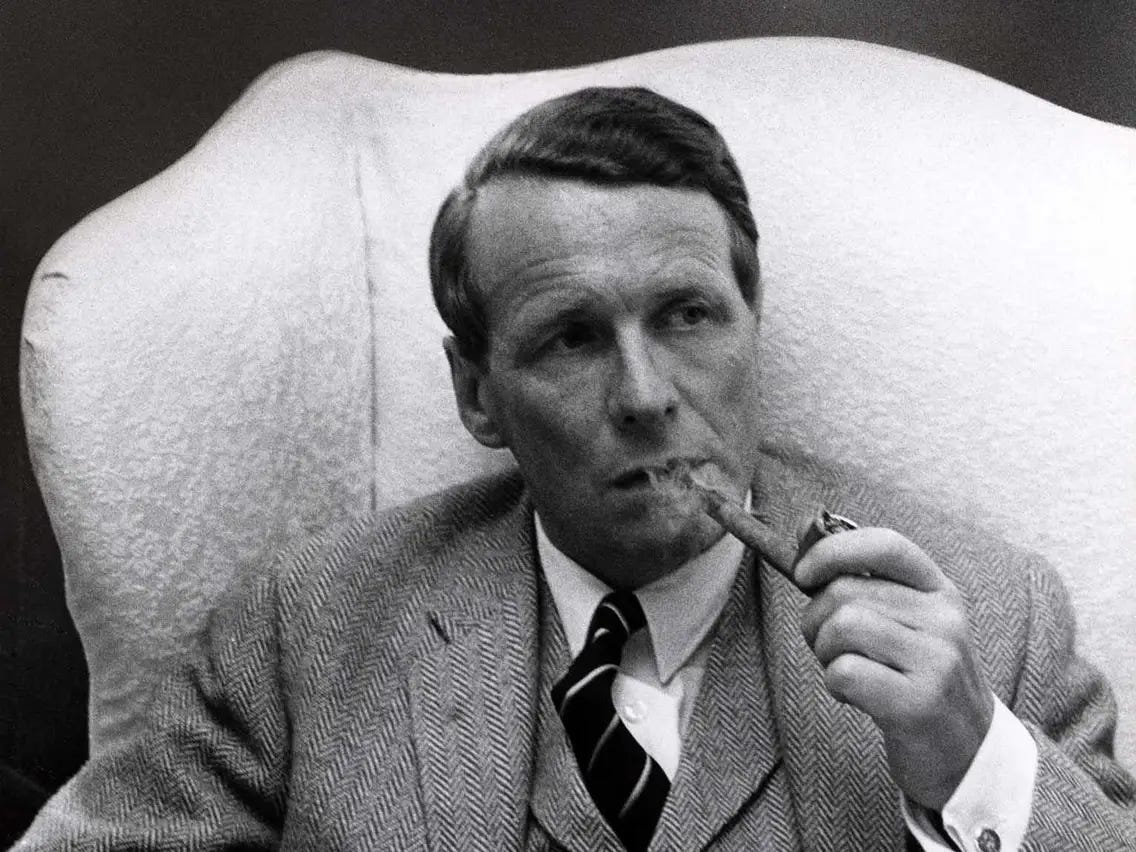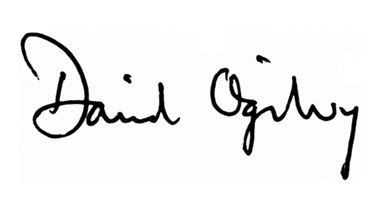In a TikTok World, Is Longer Still Better?
Wise words from David Ogilvy still challenge us 40 years later
It was inevitable. I could only go so long before I got to the incomparable David Ogilvy. Take it away, GPT!
David Ogilvy (1911-1999) was a seminal figure in the field of advertising, often referred to as “The Father of Advertising.” Born in West Horsley, England, Ogilvy's early career was remarkably diverse. He worked as a chef at the Hotel Majestic in Paris, a door-to-door salesman selling cooking stoves, a farmer in Pennsylvania, and an operative for the British Intelligence during World War II.
However, it was after this diverse work experience that Ogilvy found his true calling. In 1948, he founded his own advertising agency, Ogilvy & Mather, in New York City. The agency quickly became one of the most prominent in the world, with Ogilvy leading campaigns for major brands like Rolls-Royce, Schweppes, and Dove.
Ogilvy was known for his creative and research-based approach to advertising, emphasizing the importance of the “Big Idea.” He was a strong advocate for the use of informative, long copy (more on this below) and believed in treating the consumer with respect. His famous mantra was “The consumer is not a moron, she is your wife.”
His book, “Confessions of an Advertising Man,” is considered a classic in the field and provides insights into his approach and philosophy on advertising. Ogilvy's influence on the industry continues to be felt today, with many of his principles still being widely applied in modern advertising.
After retiring from his firm, Ogilvy moved to France where he lived out the remainder of his life. His legacy endures in the company he founded, which is now part of the international advertising, marketing, and public relations giant, WPP.
There’s a ton of great stuff in Confessions, but in today’s newsletter I’ll be quoting from a different book by this advertising legend. 👇
DR Dynamite!🧨
Welcome again to my new feature where I write about high-impact advertising wisdom from the ‘Masters of Marketing,’ specifically tried-and-true (T&T) techniques that apply to my area of expertise: direct-response advertising.
Ogilvy was a big fan of DR, as evidenced by the quote below.
I am convinced that if all advertisers were to follow the example of their direct response brethren, they would get more sales per dollar. Every copywriter should start his career by spending two years in direct response.
In Ogilvy on Advertising, he also wrote:
For all their research, most advertisers never know for sure whether their advertisements sell. Too many other factors cloud the equation. But direct-response advertisers, who solicit orders by mail or telephone, know to a dollar how much each advertisement sells. So watch the kind of advertising they do. You’ll notice important differences between their techniques and the techniques of general advertisers.
One of the big, counter-intuitive takeaways that Ogilvy got from DR advertising was a principle that we might summarize as follows:
“Direct-response advertisers know that short copy doesn’t sell,” Ogilvy explained, because “in split-run tests, long copy invariably outsells short copy.” And it wasn’t just print. Elsewhere, he asked:
General advertisers use 30-second commercials. But the direct response fraternity have learned that it is more profitable to use two-minute commercials. Who, do you suppose, is more likely to be right?
I’ll take this one, David. In the heyday of DRTV, it was well known that a two-minute commercial generated four times the consumer response of a one-minute commercial. As for 30-second commercials? They generated close to zero response.
Now, that finding is more than a decade old, and Ogilvy wrote his words in the 1980s — before the Internet, let alone social media. So I can hear all you TikTok addicts out there screaming: “No! That’s so old school! Today, shorter is better!”
But is that true? No one can argue that attention spans aren’t getting shorter, but does that mean short is now the best way to sell? Let’s answer that question by first considering the question of why. Why was longer better for all those years? Ogilvy proposed two reasons:
“Advertisements with long copy convey the impression that you have something important to say, whether people read the copy or not.”
“The more facts you tell, the more you sell.”
On the latter point, he hastened to add: “If you want your long copy to be read, you had better write it well.” For sure. You can’t bore people into buying!
OK, so let’s assume your copy or video content is compelling enough for people to spend time with it. Well then, doesn’t it just make sense that longer would be better? More time with the prospect means more time to educate him about your product. More time to bring in the persuasion of social proof (e.g. testimonials). More time to get her excited about the great value you’re providing (for a limited time only!). More time to sell and to close the sale. It’s the difference between trying to sell a top executive on an elevator ride and getting a full hour in her conference room.
But what about those short attention spans? What about TikTok? Interestingly, the platform that started off with a limit of 15 seconds on its videos has been going in the opposite direction of short.
Meanwhile, YouTube has lots of long-form content. Yes, it also now has YouTube Shorts. So what do the YouTube marketing experts say about that? Well, everyone I’ve heard speak about it says something like this:
Doesn’t that just make sense? Short videos can only be the beginning of the selling process. The prospect has to land somewhere and find more information (i.e. a longer sales pitch) in order to convert into a customer.
This is especially true for more expensive items. A reliable maxim is that ‘price impacts the selling time required.’ My discipline is “short-form” DRTV. (Two-minute commercials are considered “short” in our world because “long” is a half-hour infomercial). For most of my career, our offers had an upper price limit of $19.99. Higher price points typically failed. The maxim cited above is the reason. It takes less convincing to get people to part with their hard-earned money at impulse prices. Higher prices cross over into the dreaded ‘considered purchase’ zone, and we learned that two minutes just wasn’t enough time to get someone there.
So there you have it. Is longer still better? I find myself in the same position as Ogilvy was 40 years ago when he wrote, “All my experience says that for a great many products, long … sells more than short.” Recent data would be better, though, so I welcome anyone with a current DRTV or DTC case study to reach out.
Chart Watch 🆓
The campaign I wrote about last week — Pocket Hose Copper Bullet — is now #1 in the nation per DRMetrix. Congratulations to AJ and the BulbHead team.
That said, you can never breathe easy in this game because there’s always a competitor breathing down your neck. This week, that campaign is #12 in the nation.
Hydro Steel Pro
Pitch: “The heavy-duty hose made with real steel”
Starring: Joe Fowler
Marketer: Emson (🏆 2022 True Top Marketer)
This project first hit my radar about this time last year, but it’s pretty close to an even earlier project from 2020 called Bionic Flex Pro. Of course, you could argue that project originates in the ‘steel hose’ wars of 2017 when Emson’s Bionic Steel Hose participated in a five-way competition with Harvest’s Metal Garden Hose, Telebrands’ Hercules Hose, Tristar’s Flex Steel Hose and InvenTel’s Forever Steel Hose. Crazy days!
Anyway, the core pitch has always been the same: Disparage other hoses (including DRTV hoses often sold by the same marketer) as weak, and then offer a tougher solution. However, that pitch made more sense in 2017 when the ‘exploding hose’ problem shown in this commercial (and originating in the Metal Garden Hose spot) was still fresh in people’s minds.
These days, the market is replete with high-quality hoses of all types, so a super-durable hose just doesn’t seem that motivating to me. Of course, it’s a different story on TV, where you can tie your hose in knots and run it over with a truck. Good magic demos and torture tests will always sell product. Maybe that’s enough to get the kind of retail promotion that, combined with a good impulse price, will make this the next hose consumers choose to buy?
Recent Tests🔒
Speaking of Emson, I recently posted about one of their newest projects: a portable ceiling fan and light called Socket Fan. Below, I report on a similar project that a competitor just released.
Like I said, in this business there’s always somebody breathing down your neck!
In 2016, we had a ‘Pan War.’ Will 2023 bring us a ‘Fan War’?🤔








